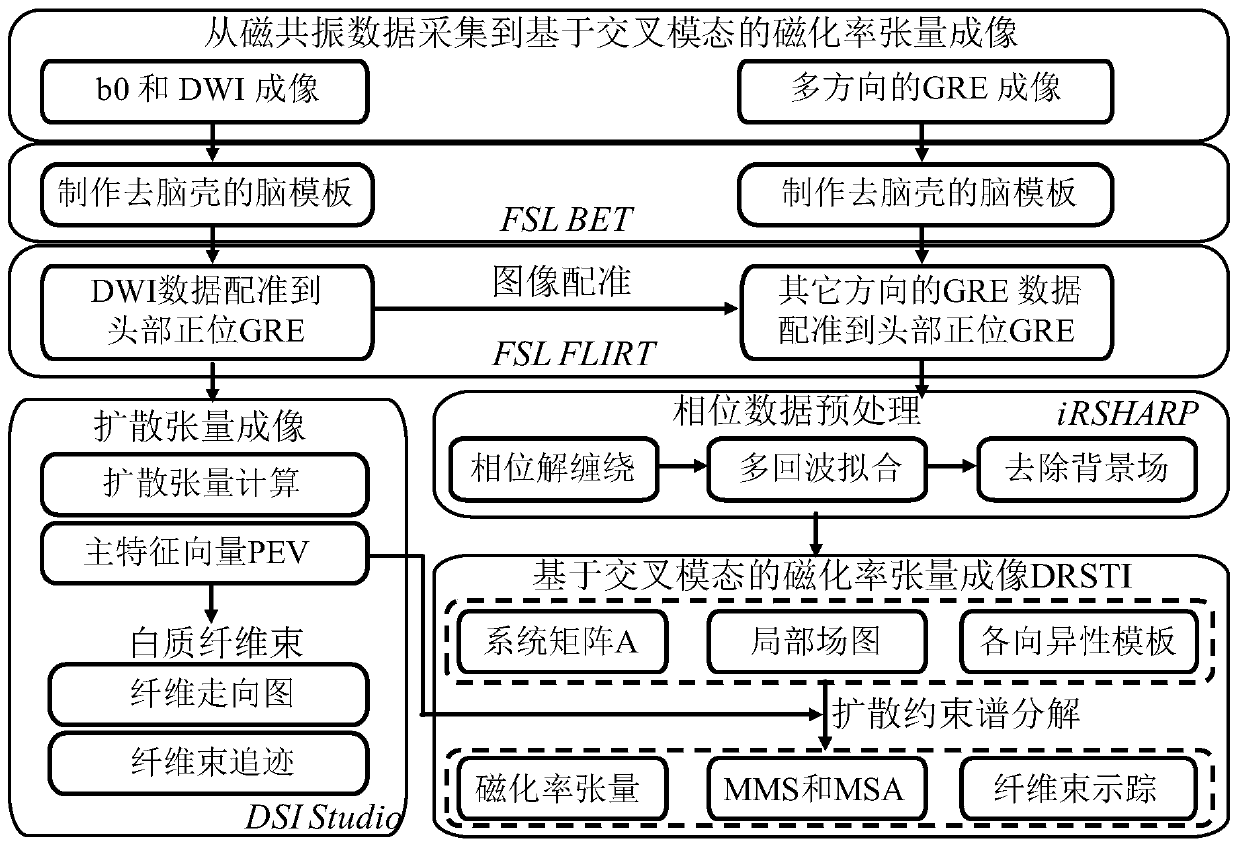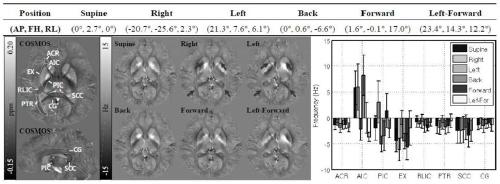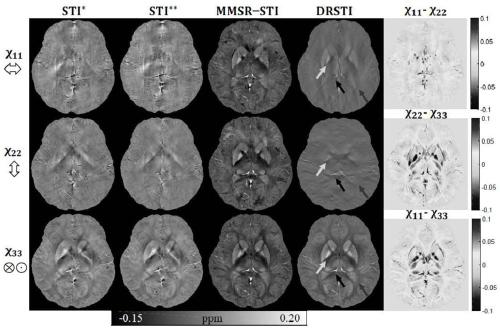Human brain magnetic susceptibility tensor imaging method based on cross mode
A cross-modal, diffusion tensor imaging technology, applied in the field of medical image processing and analysis, can solve problems such as cutting off fiber pathways, and achieve the effects of suppressing artifacts, shortening imaging acquisition time, and protecting tissue structure contrast.
- Summary
- Abstract
- Description
- Claims
- Application Information
AI Technical Summary
Problems solved by technology
Method used
Image
Examples
Embodiment Construction
[0037] The present invention will be further described below through specific embodiments.
[0038] Technical scheme of the present invention:
[0039] A cross-modal magnetic susceptibility tensor imaging method for the human brain uses tensor spectrum decomposition technology to combine high-resolution magnetic susceptibility imaging and low-resolution diffusion imaging. , DTI) to extract the regularization constraint term of the magnetic susceptibility tensor solution model of the fiber direction structure in the white matter voxel, to overcome the inherent limitations of the number of directions and direction angles in Susceptibility Tensor Imaging (STI), and to realize the application The magnetic resonance phase data collected in 6 head directions can accurately obtain a reasonable numerical solution for each component of the magnetic susceptibility tensor, effectively suppress image artifacts, and protect tissue structure contrast. The mathematical expression of the sus...
PUM
 Login to View More
Login to View More Abstract
Description
Claims
Application Information
 Login to View More
Login to View More - R&D
- Intellectual Property
- Life Sciences
- Materials
- Tech Scout
- Unparalleled Data Quality
- Higher Quality Content
- 60% Fewer Hallucinations
Browse by: Latest US Patents, China's latest patents, Technical Efficacy Thesaurus, Application Domain, Technology Topic, Popular Technical Reports.
© 2025 PatSnap. All rights reserved.Legal|Privacy policy|Modern Slavery Act Transparency Statement|Sitemap|About US| Contact US: help@patsnap.com



